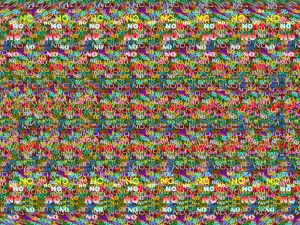 Leigh talked a bit about writing good villains earlier this month. I’m going to touch on a related topic – how do you make your antagonist likable? You might not always want a likable antagonist. But when you do, how do you pull it off?
Leigh talked a bit about writing good villains earlier this month. I’m going to touch on a related topic – how do you make your antagonist likable? You might not always want a likable antagonist. But when you do, how do you pull it off?
I’m going to borrow a definition from Writing Excuse’s podcast on the Hollywood Formula. An antagonist is not always the villain. Heck, in the really good stories the antagonist is often a friend or confident of the hero. So, using the Hollywood Formula an antagonist is “person who places obstacles to that goal in the path of the protagonist. . . . The antagonist is the one whose goals are diametrically opposed to the protagonist, and they’re the one who is blocking the protagonist’s journey.”
As an example from Writing Excuses, in the Dark Knight movie, Batman is the protagonist. His goal is to quit the dark knight gig and return to a “normal” life with the woman he loves. The person who stands in his way of that goal is the antagonist. Who is it?
One hint: it’s not the Joker.
It’s Harvey Dent, the prosecutor who loves the same woman. When it looks like Dent and the love interest can’t both be saved, Dent begs Batman to save the girl. In the end, because Harvey won’t be the man he could be, Bruce has to don the cowl and become the dark knight. Harvey’s your antagonist. but he’s not very likable. Is he?
Why not? Well, read on.
Let me take another example: Victor Laslo in Casablanca. Casablanca has the same love triangle that Dark Knight does. Follow the movie beats, they’re a lot of similar notes. Rick wants the girl, but Laslo already has her. Like Dent, Laslo represents more than just himself. When it looks like Elsa and he can’t escape, Laslo begs Rick to save Elsa. In the end, because Laslo is honorable and stays true to his goal, he makes Rick want to be a better person and rekindles his faded patriotism.
Plot-wise. Casablanca and the Dark Knight are more similar than dissimilar.
So, why do I like Laslo but not Dent? To me the difference between Harvey Dent and Victor Laslo, is that Laslo is willing to give up everything for the greater good. Dent isn’t. Fundamentally, Dent is selfish. He’s more interested in catching the headlines than catching the crooks. He’s not the best boyfriend. When he falls, he falls hard.
So, how do you make the antagonist likable?
1. Just like your protagonist and villain, your antagonist needs a goal (other than messing with the protagonist for the heck of it). I tend to like characters whose motivations I can understand and ring true.
2. The antagonist has his own morals and strengths. I dislike Harvey because once you take the shine off, he’s selfish and immature. He refuses to accept the truth Batman sees – that he (Dent) is a symbol of more than self. Dent is a weak character. First he’s seduced by power and fame. Then, the Joker seduces him with the idea of revenge. I don’t tend to like people I can’t respect. Dent loses my respect over the course of the movie.
3. The conflict with the antagonist makes the protagonist “better” in the long run. Rick’s hope rises from Pandora’s box, but Batman is condemned to a life he tried to escape. Batman is worse off in the end.
4. Even though the antagonist stands opposed to my protagonist, I almost want the antagonist to win. This goes back to the first few points. I want to be able to identify with this character and feel good about it. I’d like to be Laslo. Not so much Harvey Dent.
Have you come across a likable antagonist? If so, what made you like him or her?



